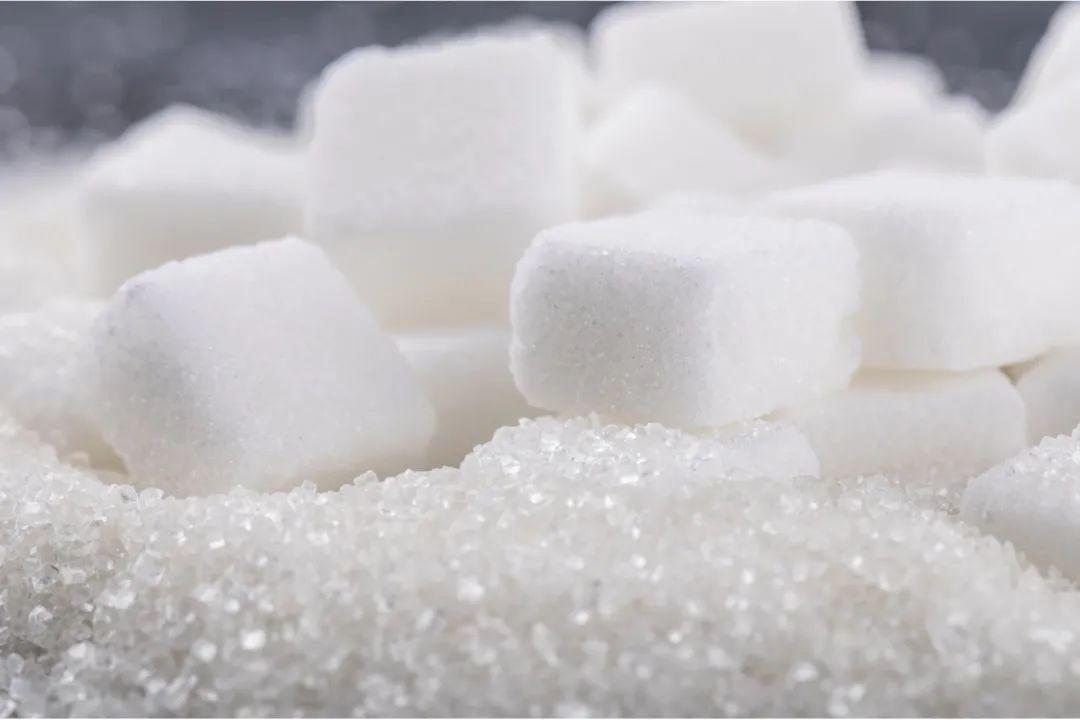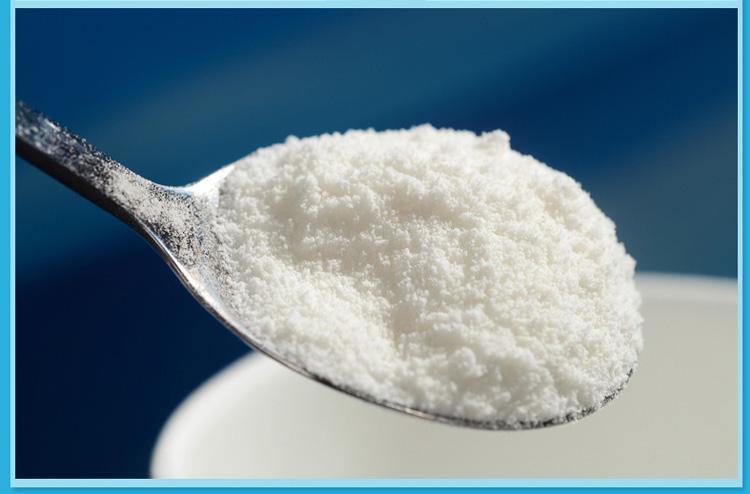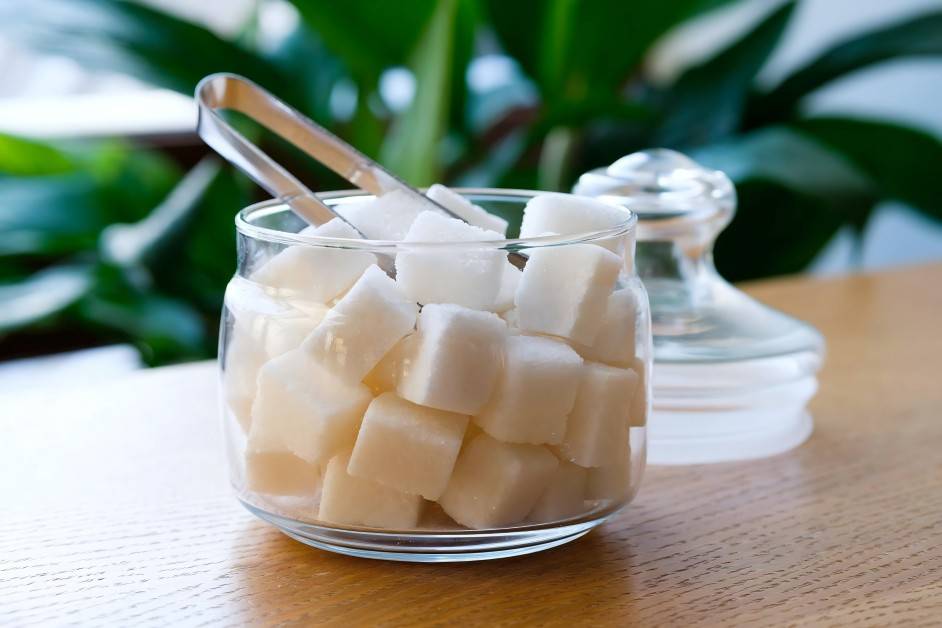What Is Allulose Powder Made From?
D Allulose (D-psicose or D-allulose) is a monosaccharide that occurs naturally in very small quantities. It is soluble in water, methanol and ethanol, but not in acetone. Its melting point is 109 °C. D Allulose is a diastereoisomer of D fructose at the C3 position and the aldopentose isomer of the rare sugar D allose (Figure 1). (Figure 1). It is found in small quantities in nature in figs, sugar cane molasses, dried fruit, sugar products, wheat and plants in the genus Tribulus.
D Allulose has special beneficial properties for the human body, such as zero calories, blood glucose regulation, and anti-oxidation. Its sweetness is similar to that of sucrose (70%), and it is considered to be the sucrose substitute with the greatest potential for large-scale application [1]. Compared with D fructose and D glucose, D allulose can generate more antioxidants, which can maintain the antioxidant status of food for a long time and preserve the flavor, color and texture of food [2-4].
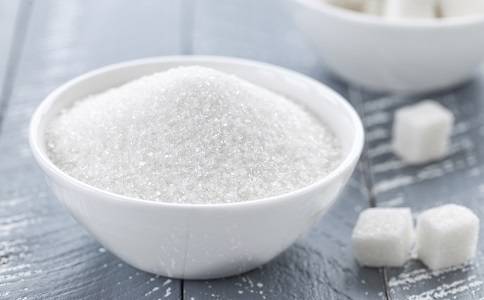
In addition, it also has a significant effect on plants. Researchers at Kagawa University in Japan found that D-allulose can induce crops such as rice to defend against pests and regulate plant growth [1]. In 2011, the US Food and Drug Administration (FDA) determined that D-allulose is generally recognized as safe (GRAS) for food. D-allulose can be used as a sweetener or as a component of food additives, and has broad application prospects in the fields of diet, health care medicine and agriculture. As a new type of functional sweetener, its huge commercial value and market prospects are waiting to be developed. This paper reviews the research progress of the physicochemical properties, synthetic process and genetic engineering modification of D-allulose, and discusses the development prospects of D-allulose with D-allulose 3-epimerase as the object to predict the development prospects of D-allulose and provide a theoretical reference for future research trends.
1 D Allulose synthesis strategy
D The chemical synthesis of allulose mainly uses glucose as the raw material, molybdate as the catalyst, and goes through chemical catalysis, chromatographic separation and purification, concentration and crystallization to prepare crystalline D allulose [5]. Bilik et al. [6] catalyzed the production of D allulose from D fructose by adding molybdate ions to an acidic solution. However, the mixture obtained only contained 0.5% D allulose was only 0.5%, and the mixture also contained 4.5% D-sorbitol, 1.0% D-tagatose and other substances. The yield was low, and there were many by-products, which was not conducive to subsequent separation and purification. McDonald [7] used a three-step chemical method to convert 1,2:4,5-di-O-isopropylidenebeta-D-fructofuranose oxidation and reduction to produce D allulose.
Doner [8] boiled D fructose in a mixture of ethanol and triethylamine to prepare D allulose. Almost all chemical methods for preparing D allulose have problems such as low yield, cumbersome subsequent separation operations, easy contamination of heavy metal and acid wastewater, and many by-products. Compared with chemical synthesis, the environmentally friendly biological method has become a new research hotspot. The biological method for synthesizing D allulose uses D fructose as a substrate and catalyses the D ⁃psicose 3 ⁃epimerase (DPE enzyme) or D ⁃tagatose 3 ⁃epimerase (DTE enzyme) to perform a D ⁃psicose 3 ⁃epimerase reaction on D fructose occurs by a diastereoisomerization reaction. Due to the high content of D fructose in the product system, the product needs to be separated and purified by ion exchange resin to obtain the final product. Compared with the chemical method, the biological synthesis of D allulose is not only low in cost, but also safe and environmentally friendly, and it is less likely to cause pollution, so it has broad development prospects.
2 D allulose biosynthesis
2. 1 Screening of key enzymes
In 1993, Japanese scholars Izumori et al. [9] first reported the D-allulose 3-epimerase from Pseudomonas cichorii ST 24, which can epimerize the C3 position of ketoses. This enzyme is most specific for D-tagatose, so it was named DTE enzyme [10 ]. The DPE enzyme from Agrobacterium tumefaciens can specifically catalyze D-fructose (700 g/L) to obtain D-allulose (230 g/L), with a conversion rate of 32.9% [11 12]. Rhizobium from soil (Sinorhizobium sp.) becomes permeable after treatment with toluene and catalyzes 700 g/L D fructose (3.9 mol/L) to produce 37 g/L D aldonic acid under optimal conditions [13].
Jiang Bo's team at Jiangnan University is committed to screening for new D allulose industrial strains. They screened a strain from a fish pond water sample with a high D allulose yield and identified it as Rhodobacter sphaeroides, named Rhodobacter sphaeroides SK011. This strain can produce D-allulose with a yield of 6.54% when D-fructose (36 g/L) is used as the substrate. It is inferred from the research that the DTE enzyme produced by Rhodobacter sphaeroides SK011 causes the diastereoisomerization of D-fructose at the C3 position to produce D-allulose. This is the first time in China that a strain with the ability to biotransform D-fructose to D-allulose has been reported [14]. In recent years, scholars at home and abroad have successively discovered DTE and DPE enzymes from different strains, laying a solid research foundation for further work. The specific situation is summarized in Table 1.
As can be seen from Table 1, the pH corresponding to the maximum enzyme activity of DTE from Dorea sp. DPE and R. sphaeroides is 6.0 and 9.0, respectively, and the pH corresponding to the maximum enzyme activity of other DPE and DTE is 7.0~8.0. The temperature corresponding to the maximum enzyme activity of DTE from R. sphaeroides is 40℃, while the temperature corresponding to the maximum enzyme activity of DPE from T. primita's DPE and Dorea sp.'s DPE maximum enzyme activity correspond to a temperature of 70 °C, and the temperatures corresponding to the maximum enzyme activity of other DPE and DTE are between these two temperatures. Most DPE exhibit high enzyme activity in the presence of Co2+.At 60 °C, the half-life of the DPE enzyme from C. cellulolyticum is 408 min, which is by far the highest thermal stability reported for DPE and DTE. The F. plautii DPE enzyme catalyzes the reaction of 750 g/L D fructose at pH 7.0 and 65 °C for 60 min , which can produce 239 g/L D allulose, with a conversion rate of 32%, and a production intensity of up to 353 g/(L·h). The DPE of Desmospora sp. and the DPE of Dorea sp. have the highest conversion rates for D fructose and D allulose; in addition, the reaction catalyzed by D fructose and D allulose reactions of D-fructose and D-allulose are reversible. Interestingly, most DPE catalyze the production of D-fructose from D-allulose 2 to 3 times more efficiently than the production of D-allulose from D-fructose (except for C. scindens DPE, which catalyzes D-allulose 7. 2 times), indicating that the enzyme is more conducive to the catalysis of D allulose. Currently, promoting the industrial production of D allulose remains a difficult and hot topic for scientists, and screening an efficient catalytic enzyme suitable for industrial production has become a bottleneck.
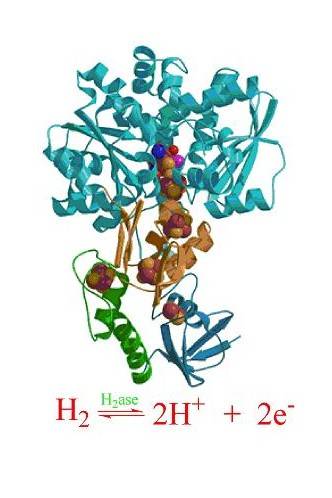
2.2 Enzyme/cell catalysis
Enzyme/cell catalysis technology is extremely important in the field of food biotechnology. It is involved in processes ranging from winemaking and cheese production to the dairy industry, baking industry, meat processing, starch and sugar industry, oil industry and food safety testing, beverage and juice industry, etc. Most enzymes can greatly accelerate the reaction process without affecting the chemical equilibrium by reducing the activation energy of the chemical reaction or activating the substrate, thereby greatly increasing the reaction rate.
These advantages are very consistent with the development thinking of the food industry, and enzyme/cell catalysis technology has also become the mainstream technology for the industrial production of D-allulose. Bai Wei et al. [26] cloned the dpe gene from Clostridium cellulolyticum H10 and expressed and purified it in B. subtilis. Under optimal conditions, 2.5 μg of the purified DPE enzyme catalyzed the production of D-allulose from 500 μL of D-fructose solution (10 g/L) to produce D-allulose, with a conversion rate of 27.3%.
The DPE enzyme from A. tumefaciens (AtDPE) has poor thermal stability. After being modified by protein engineering technology, the DPE enzyme can catalyze the production of 178 g/L D-allulose from 700 g/L D-fructose under optimal reaction conditions, with a conversion rate of 25%; while the wild-type AtDPE enzyme can only produce 107 g/ L D allulose [27]. The use of whole cells to catalyze the production of D allulose from D fructose is more convenient than enzymatic catalysis. The dpe gene from the double mutant I33L/S213C of A. tumefaciens was expressed in E. coli. 4 g/L of the bacteria can catalyze 700 g/L of D-fructose to produce 230 g/L of D-allulose, with a conversion rate of 33%. However, when crude enzyme extract was used in the reaction, only 182 g/L of D allulose, with a conversion rate of 26% [28]. In addition, after the dpe gene of C. cellulolyticum was expressed in E. coli, the culture broth could directly catalyze 750 g/L D-fructose to obtain 218 g/L D-allulose, and the conversion rate reached 29% [17]. After the dpe gene from Clostridium bolteae was expressed in E. coli, 2 g of C. bolteae cell dry powder catalyzed the conversion of 750 g/L D fructose to 216 g/L D aldonic acid, with a conversion rate of 28.8% [16].
2. 3 Immobilization technology
Compared with free enzymes, immobilized enzymes/cells can further improve the stability of enzymes, extend the service life of enzymes, and have advantages in product separation and reusability that free enzymes cannot match. Therefore, industrial production of D-allulose often uses immobilized enzymes or immobilized cell technology. Itoh et al. [29] extracted DTE (PsDTE) from cultured Pseudomonas sp. ST 24 and immobilized the enzyme on Chitopearl beads BCW 2503 carriers.
After adding the D-fructose, about 20% of the fructose was converted to D-allulose after 48 h of reaction. After further optimization, Chitopearl beads BCW 2510 immobilized PsDTE can convert 25% of D-fructose to D-allulose after reacting at 40 °C for 60 d [30]. In the catalytic process of DPE (AtDPE) in Agrobacterium tumefaciens, the addition of boric acid to the reaction system can effectively improve the conversion efficiency of the entire catalytic process. This is because the binding ability of boric acid to D-allulose is stronger than that of boric acid to D-fructose. In the reversible reaction process, after boric acid binds to D-allulose, the concentration of D-allulose in the system decreases. In order to maintain the balance of the entire reaction system, more substrate (D-fructose) moves to the forward direction (D-allulose) of the reaction. concentration decreases. In order to maintain the balance of the entire reaction system, more substrate (D fructose) moves to the forward direction of the reaction (D allulose).
However, there is a limit to the amount of boric acid that can be added. When the molar ratio of boric acid reaches 0.6, the amount of D-allulose produced reaches a maximum. When the molar ratio exceeds 0.6, the amount of D-allulose produced will tend to decrease [31]. When Duolite A568 beads are used as a immobilization carrier, the yield of D-allulose (441 g/L) and the conversion rate of the reaction (63%) of immobilized AtDPE with the addition of boric acid are 2.3 times higher than those of immobilized AtDPE without boric acid, and the production intensity is 1.3 times higher than that of immobilized enzyme without boric acid [32]. 3 times [32].
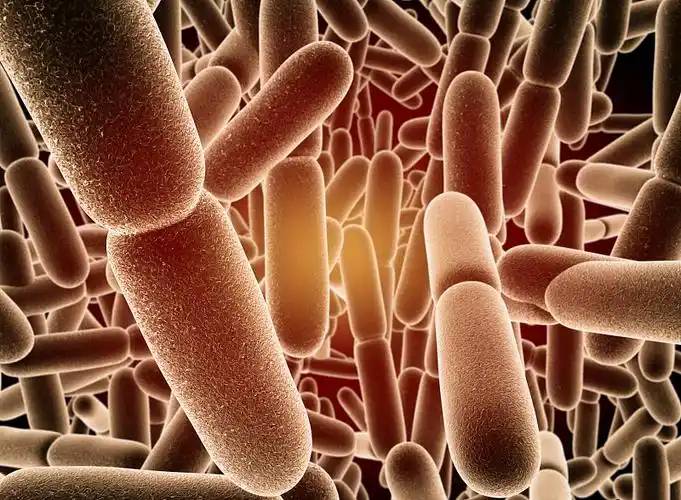
When the glucose isomerase GI of Thermus thermophilus and the AtDPE mutant (Ile33Leu/Ser213Cys) were simultaneously fixed on the cell wall of Saccharomyces cerevisiae spores, the conversion rate of catalysing the conversion of glucose to D-allulose was 12% [33] . The dpe gene of Ruminococcus sp. was cloned and expressed in Bacillus pumilus. After the DPE enzyme solution was purified and immobilized on an anion exchange resin, the immobilized enzyme still retained about 70% of its enzyme activity after 10 repeated uses, and the conversion rate of the catalytic reaction could reach 26%. Compared with the DPE produced by the original bacterium, the DPE enzyme has greatly improved protein solubility, biological activity and expression and secretion compared with the DPE produced by the original bacteria [34].
3 Genetic engineering methods
3.1 Enzyme structure
In order to achieve the industrial production of D-allulose, researchers have genetically engineered the DPE enzyme using molecular biology techniques to give it the potential for industrial application. The protein crystal structure of AtDPE was analyzed using X-ray diffraction technology, which can further explore the catalytic mechanism of DPE. Molecular modeling revealed that AtDPE is a tetrameric protease composed of four identical subunits A, B, C, and D, as shown in Figure 2(a) [35]. Each subunit is composed of 8 β-folds and 12 α-helices, and the 8 β-folds are tightly surrounded by 12 α-helices, as shown in Figure 2(b) [35]. The enzyme is a metal ion dependent enzyme. Glu150, Asp183, His209, and Glu244 bind metal ions and form the active center of AtDPE. Trp112, Glu156, and Arg215 are key sites for enzyme substrate binding [36]. The three-dimensional structure of P. cichorii DTE (PcDTE) shows that PcDTE has a similar catalytic site and spatial structure to AtDPE, and is composed of four subunits: Mol A, Mol B, Mol C and Mol D [21], as shown in Figure 3.
Choi et al. [36] used error-prone PCR to randomly mutate AtDPE and screened for two mutant strains with high stability, Ser213Cys and Ile33Leu. At the same time, a double mutant Ile33Leu/Ser213Cys (265 min ) half-lives were 26, 9 and 4 times those of AtDPE, Ser213Cys and Ile33Leu, respectively, indicating that the thermal stability of the double mutant can be improved synergistically by superposition mutation. Through molecular simulation analysis, Choi et al. [36] believed that the change in the thermal stability of the mutant strain may be due to the increase in hydrogen bonds and the stacking. Zhang et al. [37] studied the effects of different additives on the storage stability of DPE using circular dichroism and fluorescence chromatography. They found that the α-helix structure is closely related to the structural stability of DPE. Some additives (such as manganese sulfate, fructose, and ethylene glycol) can protect the α-helix structure of the DPE enzyme, while ascorbic acid has a destructive effect on the α-helix structure.
Although the crystal structure of many DPE/DTE has been well understood in recent years, their catalytic mechanism is still not clearly defined. In order to determine the role of certain amino acid sites in catalysis and binding to substrates, site-directed mutagenesis is used to replace these amino acid residues with specific types of amino acids and measure their properties. This is the basis for understanding substrate specificity and enzyme catalysis. Comparative analysis of the amino acid sequences of DPE (AsDPE) from Agrobacterium sp. ATCC31749 and AtDPE showed that although AsDPE and AtDPE are 98% similar (only 6 amino acids are different), the specific activity of AtDPE (8.89 U/mg) is only 10% that of AsDPE (90.5 U/mg) only 10% of the activity.
In order to further verify the effect of these six sites on enzyme activity, different mutant strains were constructed by site-directed mutagenesis to mimic the interface interactions of AtDPE. It was found that except for the mutant strain Asn234Asp, whose enzyme activity was only 25.5% of that of the wild-type AsDPE, the enzyme activity of the remaining five residues located on the surface of each subunit mutations only lead to a 15% decrease in AsDPE enzyme activity. This shows that Asn at position 234 is an important interface residue. After the site is mutated to Asp, the enzyme activity is lost by 74.5%. The reason for this may be that after the mutation, the hydrogen bond network around the tetramer interface changes (Figure 4), thereby weakening the enzyme's ability to bind D-fructose [38].
3.2 Molecular biological modification
Romero et al. [39] found that the dual-enzyme coupling expression system has many advantages. When the two enzymes are close to each other, the first enzyme can create a favorable microenvironment for the second enzyme to react, so that the second enzyme has sufficient substrate, reducing the diffusion time of the substrate relative to the enzyme, and can more efficiently promote the reaction. Men et al. [40] cloned the D-glucose isomerase (GI) gene from Bacillus sp. bacillus (Bacillus sp.) D glucose isomerase (glucose isomerase, GI) gene and rumen microorganism (Ruminococcus sp.) DPE gene were co-transformed into the E. coli BL21 strain to construct a D allo-keto acid one-step catalytic system, which can catalyze the conversion of glucose to D allo-keto acid up to 16 %. Similarly, the coupling of GI from Acidothermus cellulolyticus and DPE from Dorea sp. CAG 317 forms a co-expression system that can catalyze the production of 89.1 g/L D-allulose from 500 g/L D-glucose [41].
4. Separation and purification of D-allulose
In the production of D allulose, the product obtained by enzymatic catalysis of the substrate needs to be further separated to separate D allulose from D fructose and other sugars to obtain high-purity D allulose. Due to a lack of knowledge about D allulose and limitations in measurement methods, the specific content of D allulose in food is rarely reported. For many years, the separation of D-allulose from D-fructose has been a problem. Because the two have similar physical and chemical properties, such as molecular weight, molecular size and charge, it is difficult to completely separate D-fructose and D-allulose using common separation methods.
Simulated moving bed (SMB) technology is a separation method based on the principle of chromatographic separation.
It uses ion exchange resin as the stationary phase. Due to its low operating cost, simple operation, and good separation effect, it is suitable for large-scale continuous production and is now widely used in the separation of sugar products [42]. Nguyen et al. [43] used Dowex 50WX4 Ca2+ ion exchange resin as the stationary phase and simulated the SMB process. process, and finally found that: the purity and yield of allulose were 99. 04% and 97. 46%, respectively, while the purity and yield of the raffinate (D fructose) were 99. 06% and 99. 53%, respectively.
Under optimized operating conditions, complete separation was achieved (extraction purity 99. 36%, raffinate purity 9 99. 67%). The simulated results and experimental results show a high degree of agreement and good separation results, which indicates that SMB, as an efficient separation technique, can be used in the actual production of D-allulose. Wagner et al. [44] showed that SMB can be used to realize the operation of multi-stage enzyme cascades in continuous chromatography. Using the enzymes transglucosidase, D-xylose isomerase and DTE, D-allulose can be efficiently produced via the intermediates D-glucose and D fructose, efficiently producing D allulose, which can be purified and separated to achieve a final purity of 99. 9% and a yield of 89%.
Li et al. [45] used anion exchange resin to convert D-fructose into gluconic acid, which is easily separated from D-allulose. The entire system consists of two continuously stirred reactors (CSTRs) containing immobilized glucose isomerase (GI) and immobilized glucose oxidase (GOD), respectively. The reaction first converts D-fructose to D-glucose under the catalytic action of immobilized GI, and then to gluconic acid under the catalytic action of immobilized GOD.
Finally, the gluconic acid is adsorbed and recycled by anion exchange resin D309. The final results show that the product is highly diluted in SMB and requires a lot of concentration before crystallization. However, the concentration of D-allulose after purification by this enzymatic system is quite high, which saves a lot of operating time and is very suitable for industrial applications. Although the adsorbent matrix used in SMB is relatively expensive, the materials used to immobilize GI and GOD enzymes and the anion exchange resins used in this system are common and inexpensive in industry, so the process is easy to operate and scale up. Finally, the purification rate of D-allulose reached 91.2%, most of the D-fructose was removed from the system, and the purified D-allulose was further crystallized to a purity of >99%.
5 Summary and outlook
In recent years, D-allulose has been recognized as an ideal substitute for sucrose. It not only has a sweetness similar to sucrose, but is also calorie-free, non-toxic, and easy to process. It is undoubtedly an ideal new sweetener with excellent market prospects and commercial value. However, at present, D-allulose still cannot be produced in large quantities industrially for the following reasons: ① Due to the influence of E. coli endotoxin, there are hidden dangers in terms of food safety. At the same time, there has been relatively little development and research on food-grade DPE and DTE enzyme expression hosts. Therefore, in the next step of research, food-grade microorganisms (such as Saccharomyces cerevisiae, Bacillus glutamicum, Bacillus subtilis, etc.) can be used as expression hosts to solve the defects of strains for industrial production. ②Currently, all the DPE and DTE enzymes studied have problems such as low enzymatic activity and poor stability.
On the basis of a certain understanding of the enzyme structure, corresponding mutations or modifications can be made to the target protein. Developing a strain with high enzymatic activity is still a long and arduous task. ③Most studies on the production of D-allulose use D-fructose as a substrate. However, compared to fructose, fructose-glucose syrup is cheaper and can also be used to produce D-allulose under enzymatic catalysis, which is beneficial for reducing the industrial production cost of D-allulose. ④Because D allulose is difficult to crystallize, it is not conducive to its final separation and purification from the reaction solution, which will greatly increase the difficulty of the production process and make the operation complex. Currently, it is necessary to develop a method that can cause D allulose to crystallize, so that the product can be better separated, which is conducive to subsequent recovery and reduces the operating cost of separation and purification. As research continues to deepen, the development of a highly efficient, low-cost production method suitable for industrial production of D-allulose will ultimately benefit the public.
References:
[ 1 ] Huang Q Y, Xu Z, Xiong Q, et al. Research and development progress of the zero-calorie sweetener D-allulose [J]. Industrial Microbiology, 2020, 50(3):57⁃63.
[ 2 ] SUN Y , HAYAKAWA S , OGAWA M , et al. Influence of a rare sugar , D ⁃psicose , on the physicochemical and functional properties of an aerated food system containing egg albumen [ J ] . J Agric Food Chem ,2008 , 56(12) :4789⁃4796.
[ 3 ] KIM S E , SU J K , KIM H J , et al. D ⁃psicose , a sugar substitute ,suppresses body fat deposition by altering networks of inflammatory response and lipid metabolism in C57BL/6J⁃ob/ob ,mice[ J] .J Funct Foods ,2017 ,28 :265⁃274.
[ 4 ] SUN Y , HAYAKAWA S , JIANG H , et al. Rheological characteristics of heat⁃induced custard pudding gels with high antioxidative activity [ J ] . Biosci Biotechnol Biochem , 2006 , 70(12) :2859.
[5] Wang Chengfu, Fang Chunlei, Du Ruifeng, et al. A method for preparing allulose and its application: 104447888A[P]. 2015⁃03⁃25.
[6] BILIK V , TIHLARIK K. Reaction of saccharides catalyzed by molybdate ions: IX.epimerization of ketohexoses[ J] .Chem Zvesti , 1973 ,28 : 106⁃ 109.
[ 7 ] MCDONALD E J. A new synthesis of D ⁃psicose ( D-ribo-hexulose) [ J] .Carbohydr Res , 1967 , 5 : 106⁃ 108.
[ 8 ] DONER L W. Isomerization od D ⁃fructose by base : liquid⁃chromatographic evalution and the isolation of D ⁃psicose [ J ] .Carbohydr Res , 1979 ,70 :209⁃216.
[ 9 ] IZUMORI K , KHAN A R , OKAYA H , et al. A new enzyme , D-ketohexose 3-epimerase , from Pseudomonas sp. ST⁃24 [ J ] . Biosci Biotechnol Biochem , 1993 , 57(6) : 1037⁃ 1039.
[10] ITOH H , OKAYA H , KHAN A R , et al. Purification and characterization of D ⁃tagatose 3 ⁃epimerase from Pseudomonas sp.ST-24[ J] .Biosci Biotech Biochem , 1994 , 58(12) :2168⁃2171.
[11] KIM H J , HYUN E K , KIM Y S , et al. Characterization of an Agrobacterium tumefaciens D ⁃psicose 3 ⁃epimerase that converts D-fructose to D ⁃psicose[ J] .Appl Environ Microbiol , 2006 , 72( 2) :981 ⁃985.
[12] KIM K , KIM H J , OH D K , et al.Crystal structure of D-psicose 3-epimerase from Agrobacterium tumefaciens , and its complex with true substrate D ⁃fructose : a pivotal role of metal in catalysis , an active site for the non⁃phosphorylated substrate , and its conformational changes[ J] .J Mol Biol ,2006 , 361(5) :920.
[13] OH D K , KIM N H , KIM H J , et al.D ⁃Psicose production from D ⁃ fructose using an isolated strain , Sinorhizobium sp. [ J] . World J Microbiol Biotechnol ,2006 ,23(4) :559⁃563.
[14] Zhang Longtao, Mu Wanmeng, Jiang Bo, et al. Screening of Sphingobacteriaceae for biotransformation to D-allulose [J]. Food and Fermentation Industry, 2008, 34(9): 40⁃43.
[15] MU W M , ZHANG W L , FANG D , et al. Characterization of a D-psicose⁃producing enzyme , d-psicose 3-epimerase , from Clostridium sp. [ J] .Biotechnol Lett ,2013 , 35(9) : 1481 ⁃ 1486.
[16] JIA M , MU W M , CHU F F , et al. A D-psicose 3-epimerase withneutral pH optimum from Clostridium bolteae for d⁃psicose production:cloning, expression , purification , and characterization [ J] .Appl Microbiol Biotechnol ,2014 ,98(2) :717-725.
[17] MU W , CHU F , XING Q , et al. Cloning, expression , and characterization of a D ⁃psicose 3 ⁃epimerase from Clostridium cellulolyticum H10 [ J ] . J Agric Food Chem , 2011 , 59 ( 14 ) : 7785⁃7792.
[18] ZHANG W , FANG D , XING Q , et al. Characterization of a novel metal⁃dependent D ⁃psicose 3 ⁃epimerase from Clostridium scindens 35704[ J] .PLoS ONE ,2013 , 8(4) :e62987.
[19] ZHANG W , FANG D , ZHANG T , et al. Characterization of a metal⁃dependent D ⁃psicose 3 ⁃epimerase from a novel strain , Desmospora sp. 8437 [ J ] . J Agric Food Chem , 2013 , 61 ( 47 ) : 11468⁃ 11476.
[20] ZHANG W , LI H , ZHANG T , et al.Characterization of a D⁃psicose 3 ⁃epimerase from Dorea sp. CAG317 with an acidic pH optimum and a high specific activity[ J] .J Mol Catal B ,2015 , 120 : 68⁃74.
[21] YOSHIDA H , YAMADA M , NISHITANI T , et al. Crystal structures of D ⁃tagatose 3 ⁃epimerase from Pseudomonas cichorii and its complexes with D ⁃tagatose and D ⁃fructose[ J] .J Mol Biol ,2007 , 374(2) :443⁃453.
[22] ZHANG L , MU W ,JIANG B , et al.Characterization of D-tagatose-3-epimerase from Rhodobacter sphaeroides that converts D-fructose into D-psicose[ J] .Biotechnol Lett ,2009 , 31(6) : 857⁃862.
[23] ZHU Y , YAN M , WEI B , et al. Overexpression of D -psicose 3 -epimerase from Ruminococcus sp. in Escherichia coli , and its potential application in D⁃psicose production[ J] .Biotechnol Lett ,2012 , 34(10) : 1901 ⁃ 1906.
[24] ZHANG W , ZHANG T , JIANG B , et al. Biochemical characterization of a D-psicose 3 -epimerase from Treponema primitia ZAS- 1 and its application on enzymatic production of D ⁃psicose[ J] .J Sci Food Agric ,2016 ,96(1) :49⁃56.
[25] PARK C S , KIM T , HONG S H , et al. D ⁃allulose production from D-fructose by permeabilized recombinant cells of Corynebacterium glutamicum cells expressing D⁃allulose 3⁃epimerase Flavonifractor plautii[ J] .PLoS ONE ,2016 , 11(7) :e0160044.
[26] Bai Wei, Zhu Yueming, Men Yan, et al. Production of D-allose from D-fructose by a novel isomerase transformation [J]. Chinese Journal of Bioengineering, 2012, 28(4): 457⁃465.
[27] PATEL S N , SHARMA M , LATA K , et al. Improved operational stability of D-psicose 3-epimerase by a novel protein engineering strategy , and D-psicose production from fruit and vegetable residues[ J] .Bioresour Technol ,2016 ,216 : 121-127.
[28] PARK C S , PARK C S , SHIN K C , et al.Production of D-psicose from D-fructose by whole recombinant cells with high-level expression of D-psicose 3-epimerase from Agrobacterium tumefaciens[ J] .J Biosci Bioeng,2016 , 121(2) : 186-190.
[29] ITOH H , SATO T , IZUMORI K.Preparation of D-psicose from D-fructose by immobilized D ⁃tagatose 3 ⁃epimerase [ J ] . J Ferment Bioeng, 1995 , 80(1) : 101-103.
[30] TAKESHITA K , SUGA A , TAKADA G , et al. Mass production of D-psicose from D-fructose by a continuous bioreactor system using immobilized D-tagatose 3-epimerase[ J] .J Biosci Bioeng,2000 ,90(4) :453-455.
[31] LIM B C , KIM H J , OH D K. A stable immobilized D-psicose 3-epimerase for the production of D ⁃psicose in the presence of borate[ J] .Process Biochem ,2009 ,44 : 822-828.
[32] KIM N H , KIM H J , KANG D I , et al. Conversion shift of D-fructose to D-psicose for enzyme⁃catalyzed epimerization by addition of borate [ J ] . Appl Environ Microbiol , 2008 , 74 ( 10) :3008⁃3013.
[33] LI Z , LI Y , DUAN S , et al. Bioconversion of D-glucose to D-psicose with immobilized D ⁃xylose isomerase and D-psicose 3-epimerase on Saccharomyces cerevisiae spores[ J] .J Ind Microbiol Biotechnol ,2015 ,42(8) : 1117⁃ 1128.
[34] LI C , LIN J , GUO Q , et al. D ⁃Psicose 3 ⁃epimerase secretory overexpression , immobilization , and D ⁃psicose biotransformation ,separation and crystallization [ J ] . J Chem Technol Biotechnol ,2018.DOI : 10. 1002/jctb. 5360.
[35] YOSHIDA H , YOSHIHARA A , ISHII T , et al.X⁃ray structures of the Pseudomonas cichorii D ⁃tagatose 3 ⁃epimerase mutant form C66S recognizing deoxy sugars as substrates[ J] . Appl Microbiol Biotechnol ,2016 , 100(24) : 10403⁃ 10415.
[36] CHOI J G , JU Y H , YEOM S J , et al. Improvement in the thermostability of D-psicose 3-epimerase from Agrobacterium tumefaciens by random and site⁃directed mutagenesis [ J ] . Appl Environ Microbiol ,2011 ,77(20) :7316⁃7320.
[37] ZHANG Q ,JIANG B , ZHANG T , et al. Deactivation kinetics and the effects of additives on storage stability and structure of D-psicose 3-epimerase[ J] .Biotechnol Lett ,2018 ,40(1) : 173-179.
[38] TSENG W C , CHEN C N , HSU C T , et al. Characterization of a recombinant D ⁃allulose 3 ⁃epimerase from Agrobacterium sp.ATCC 31749 and identification of an important interfacial residue [ J] . Int J Biol Macromol ,2018 , 112 :767⁃774.
[39] ROMERO C , SÁNCHEZ S , MANJÓN S , et al. Optimization of the pectinesterase/endo⁃D ⁃polygalacturonase co⁃immobilization process [J] .Enzyme Microb Technol , 1989 , 11(12) :837⁃843.
[40] MEN Y , ZHU Y , ZENG Y , et al. Co-expression of D-glucose isomerase and D-psicose 3-epimerase: development of an efficient one⁃step production of D ⁃psicose [ J ] . Enzyme Microb Technol ,2014 , 64/65 : 1 ⁃5.
[41] ZHANG W , LI H , JIANG B , et al. Production of D-allulose from D-glucose by Escherichia coli transformant cells coexpressing D-glucose isomerase and D ⁃psicose 3 ⁃epimerase genes [ J ] . J Sci Food Agric ,2017 ,97(10) : 3420⁃3426.
[42] Cai Yujie, Ding Yanrui, Zhang Dabing, et al. Simulation of moving bed chromatography and its application [J]. Chromatography, 2004, 22(2): 111-115.
[43] NGUYEN V D , LE T H , KIM J I , et al. Separation of D-psicose and D-fructose using simulated moving bed chromatography[ J] .J Sep Sci ,2009 , 32(11) : 1987⁃ 1995.
[44] WAGNER N , BOSSHART A , FAILMEZGER J , et al. A separation⁃integrated cascade reaction to overcome thermodynamic limitations in rare⁃sugar synthesis[ J] .Angew Chem Int Ed ,2015 ,54(14) :4182⁃4186.
[45] LI C , ZHANG C , LIN J , et al.Enzymatic fructose removal from D ⁃ psicose bioproduction model solution and the system modeling and simulation[ J] .J Chem Technol Biotechnol ,2018 ,93 : 1249⁃ 1260.


 English
English French
French Spanish
Spanish Russian
Russian Korean
Korean Japanese
Japanese